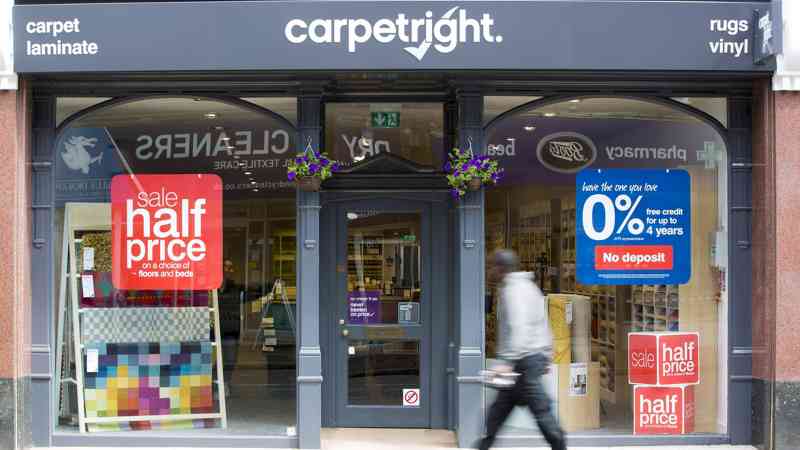Five ways to boost your investment portfolio while on holiday
At a recent gathering of minds, the chief financial planning director at Evelyn Partners mentioned to me that summer is increasingly a really busy time for advisers. Once clients have some time off work, they want to review their Isas and pensions, she said.
I’ve been guilty of keeping professionals busy over the holidays. On our Easter break I crowbarred myself off the beach to sit in our hotel room for a WhatsApp video call with my accountant. It was the end of the tax year and I hadn’t found the time to speak to her before.
On our summer holiday, I know I’ll be catching up on my financial admin during quieter moments.
If you find your thoughts turning to your finances at the poolside, it’s worth having a checklist of the key things to consider in your annual audit.
Have a look at your portfolio breakdown (available on most investment platforms) to see how balanced — or unbalanced — it is. The breakdown page will show the proportion you have invested in asset classes, regions and sectors.
If you’ve been merrily dabbling with your portfolio throughout the year, you may now be wide of the mark in terms of the level of risk you originally decided to take. Equally, over time, the shift in markets and asset classes can change your exposure.
• Best investment platforms for beginners
If necessary, take steps to rebalance. This might mean selling some of the funds that have earned you decent returns and topping up elsewhere.
If your portfolio has performed really well and you’re close to reaching a point where you need to access some money, you may want to rejig things and consider reducing the amount of risk you are taking.
Your portfolio breakdown will also enable you to clearly see any funds that have dragged down your returns because the numbers will be in red. But that doesn’t mean you should automatically ditch those holdings.
If a fund is losing you money, you need to set its performance in context and check how it compares with others in the same group. By comparing it with an appropriate benchmark you can see whether your manager has performed in line with everyone else or if they have missed the mark. If the latter is the case, it might be time to make a move — or certainly to dig a little deeper into the manager’s strategy and outlook.
Fees can erode your investment portfolio over time, putting a big dent in your returns. You might think that paying 0.7 per cent instead of 0.4 per cent won’t make much of a difference, but the effects of compounding mean it could have a big impact over the longer term.
The overall charge is made up of several elements. The annual platform fee is either a flat fee or based on the value of your investments. The benefit of a flat fee is that your investments can grow and you won’t pay higher charges.
• Best stocks and shares Isas
Look at what you’ve paid in trading charges over the year. When you trade — buy and sell — investments there may be a dealing charge each time.
If you like to buy and sell, charges can rack up if they’re applied per trade. You might be able to find a platform with a flat fee for trading or even one that will let you trade free of charge. There are also fund charges to consider. Are you still getting good value for money or can you access a similar strategy for less?
Are you maximising tax allowances? Using a combination of pensions and Isas, you can save up to £220,000 this year without worrying about tax on any growth. That’s up to £200,000 in a pension by taking advantage of unused allowances from previous years, if you have them, and £20,000 in an Isa. Other than by using previous year’s allowances, you can’t pay more into a pension than you earn in a year.
If you have children, you can shelter £9,000 each year (per child) in Junior Isas too.
Any non-earners in the household can pay up to £2,880 into a pension each year and get tax relief equivalent to the 20 per cent basic rate, topping it up to £3,600. Someone else can make this contribution for them.
Hargreaves Lansdown crunched some numbers, modelling different scenarios for someone earning £28,000 a year and contributing the auto-enrolment minimum of 5 per cent (and getting 3 per cent from their employer) to their pension from age 22 to 68.
In one, the person took a five-year break from contributions between 32 and 37 because they spent time out of work. In the other, the member’s partner contributed £2,880 a year for them over those five years. The person who got contributions from their partner ended up with £67,000 more than the person who didn’t.
You can save more through other allowances. Think about sharing the capital gains tax (CGT) allowance of £3,000 with a spouse or civil partner. By passing shares between you, you can utilise two CGT allowances each tax year when you make a profit from investments outside an Isa (or pension).
If your circumstances have changed in any way since your last review, consider whether you need to take action.
If you’ve had a promotion or bagged a new job with a higher salary, now is the time to increase your monthly Isa contribution (bearing in mind the £20,000 annual allowance, of course). It’s all too easy to keep it at the same level, but if you can afford to do so, you should put more into a tax-efficient investment.
With savings rates having been pretty generous over the past year or so, many investors may have stashed their cash. Savers put £3.4 billion into cash Isas in June alone, according to Bank of England data released last month.
But savings rates have been falling steadily, and will continue now the Bank has cut its base rate of interest. This might prompt you to rethink the level of cash savings you have and switch to investing.
Remember, interest rates on cash savings accounts can and do change. Historically, over the long term, investing beats returns from cash.
A holiday can help give you the headspace you need to finally get around to these important matters that life often gets in the way of.
Happy holidays!






